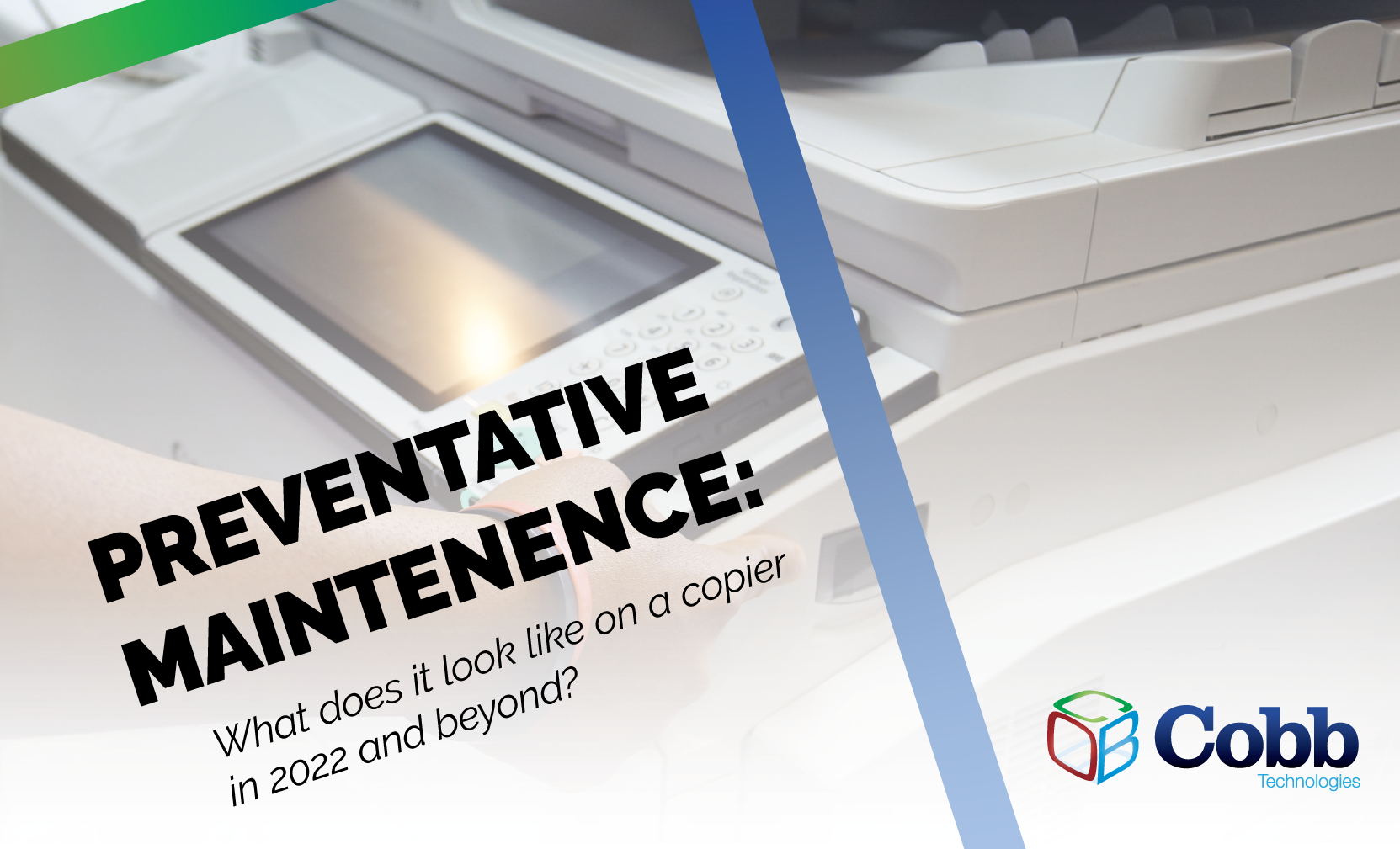3 min read
Building Culture That Works: Cobb Tech Named One of VA's Best
Cobb Technologies has been honored as one of the 2025 Best Places to Work in Virginia by Virginia Business and Best Companies Group. This prestigious...
2 min read
 Bill Mitchell
Nov 29, 2022 2:11:05 PM
Bill Mitchell
Nov 29, 2022 2:11:05 PM

The copier manufacturing industry is more advanced than automobile manufacturers — when it comes to preventative maintenance, that is.
When you’re driving down the road, and all of a sudden your car starts to produce a weird thump, you know you’re going to have to bring it into a mechanic so they can diagnose the problem.
Your office copier, however, can call for help before it needs it.
If you were to go back in time, even just a decade ago, preventative maintenance was conducted the way we still tend to think of it; your copier’s service technician would show up about once a month to run a through diagnostic, opening up your copier, and sometimes even taking it apart to check and see wear and tear on parts.
Now, there’s a few problems with this method:
Let’s snap back to 2022. What does preventative maintenance look like now? We live in a day where your fridge can order groceries on your behalf — and your copier can basically do the same thing.
Copiers today are built with sensors that are continuously monitoring wear and tear on the individual parts that make up your copier. And when we state “individual parts,” we mean it.
For example, imagine you have a Canon DX C3826i in your office. It’s been printing, copying, and scanning for eighteen months now. Over the course of those eighteen months, your office has averaged about 2,500 prints per month, but average 15,000 scans per month.
Understandably, your copier’s rollers for the scanning document feeder would wear out faster than the document feeder rollers for your print tray. Your office’s Canon would, however, have been keeping an eye on things, and when even an individual feed tire roller wears down on the scanning tray, the copier will send an automated service ticket to your service provider.
From here, the technician responsible for your copier will receive the alert, check their inventory, order the part if needed, and then replace the part — all before it wears out and actually breaks.
This new method of preventative maintenance drastically reduces down time on your copier: there isn’t a service technician running diagnostics on it once a month. Plus, you’ll never experience a surprise in the form of broken parts again.
Almost every aspect of your copier’s maintenance can be automated. In addition to parts and service, you can also automate ordering your copier’s toner. To find out how, read our blog, How to Automated Toner Cartridge Delivery to Your Office.
Especially in today’s business climate, it’s important to know you can trust your business partners — both in terms of honesty, and delivering maximum value.
This is why some copier service providers are touting in-person preventative maintenance as a differentiator between them and their competition. And while it is a differentiator, it’s different because it’s less efficient.
It is nice to see the smiling face of your copier’s service technician once a month, but it’s nicer to know your service is as efficient and streamlined as possible — therefore reducing your service costs, downtime, and maintenance interruptions.
To learn more about how Cobb serves our clients, watch our video, Precision Care: Filling the Gaps in Your Copier’s Service Agreement.

3 min read
Cobb Technologies has been honored as one of the 2025 Best Places to Work in Virginia by Virginia Business and Best Companies Group. This prestigious...

5 min read
Cobb Technologies is honored to hold the SWaM (Small, Women-owned, and Minority-owned Business) certification, awarded by the Commonwealth of...

5 min read
Every year, thousands of Veterans transition from military service to civilian careers in Virginia, bringing invaluable skills and experiences to...